
For centuries, bass fishing was a necessity — a means of survival. Native Americans and early settlers fished for bass using primitive methods and tools, relying on the waters of North America for sustenance. The largemouth bass, native to the rivers and lakes of the continent, was a vital resource.
However, as the country developed and people began to have more leisure time, fishing transformed from a survival tactic into a beloved recreational activity. Bass fishing in particular grew into a cherished hobby, prized for the thrill of the catch and the tranquility of time spent on the water. With the birth of the modern sporting era in the 20th century, bass fishing evolved further, becoming a competitive sport with passionate followers and professional tournaments.
At the heart of this transformation was technology. Over the decades, innovations in fishing gear and boat design, and later in electronics, radically changed the way people fished. Tools that were once viewed with skepticism became indispensable, and today, technology continues to push the sport forward. Let’s dive into the key innovations that shaped bass fishing as we know it today.
Timeline of bass fishing technology

1780-1841: The first baitcasting reel
- Inventor: George Snyder (Kentucky)
- Description: Between 1810 and 1820, Snyder developed the first American-made baitcasting reel, which introduced a gear ratio allowing for greater precision and longer casts.
- Usage today: Baitcasting reels remain a staple in bass fishing, known for their accuracy, especially when casting near structures like docks and trees.
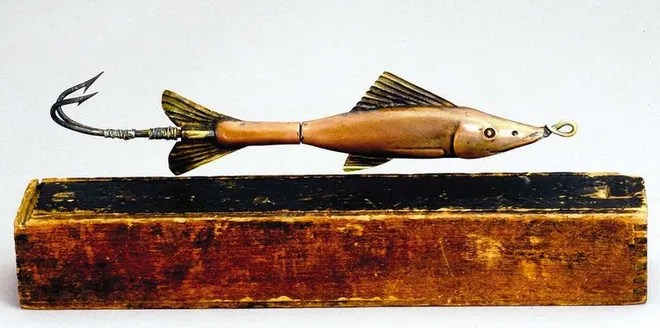
1859: The Haskell Minnow
- Inventor: Riley Haskell
- Description: The Haskell Minnow, one of the earliest artificial lures, was designed to imitate a baitfish’s movement, introducing the idea of artificial lures as an alternative to live bait.
- Usage today: Artificial lures have become an essential part of bass fishing, with a wide range of designs for different water conditions and fish behavior.

1880s: Silk fishing line
- Inventor: Various (common usage)
- Description: Silk lines replaced earlier materials like horsehair, providing a stronger, more durable line for anglers, which made casting and catching larger fish easier.
- Usage today: Modern fishing lines, including monofilament and fluorocarbon, have their roots in these early innovations.
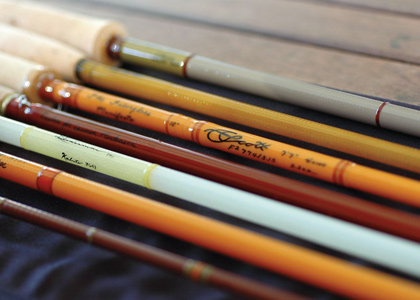
1940s: First fiberglass fishing rods
- Inventors: Robert Gayle and Mr. McGuire
- Description: The introduction of fiberglass fishing rods in the 1940s marked a significant advancement over bamboo rods. Fiberglass rods were more durable, flexible and affordable, providing better performance and becoming widely popular among anglers.
- Usage today: Fiberglass rods are still used today, particularly for techniques requiring more flexibility, such as crankbait fishing, but have largely been replaced by graphite rods for most modern bass fishing.

1937: Monofilament fishing line
- Inventor: DuPont Company (United States)
- Description: DuPont’s invention of nylon led to the development of the first monofilament fishing line. This new synthetic line was a fiber made of water, air and coal, with very high strength and thin as spider silk. Many anglers today commonly refer to nylon lines as monofilament. This line was much stronger and less visible than its silk predecessors, offering anglers improved casting distance and durability.
- Usage today: Monofilament remains one of the most popular types of fishing lines due to its versatility, elasticity and affordability, though other materials like fluorocarbon have joined the lineup.

1948: The first bass boat
- Inventor: Holmes Thurmond (Skeeter Boats)
- Description: The flat-bottom design of the first bass boat allowed anglers to navigate shallow waters more easily, drastically improving their ability to access prime fishing spots.
- Usage today: Today’s bass boats are equipped with advanced electronics, powerful motors and storage systems that support both recreational and competitive fishing.
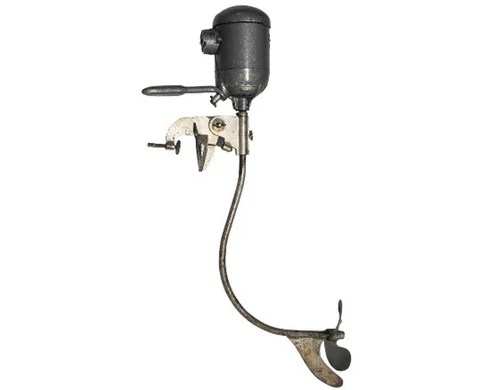
1934: First trolling motor
- Inventor: O.G. Schmidt (Minn Kota)
- Description: Schmidt’s invention of the first electric trolling motor revolutionized how anglers could position their boats and control their movements silently in the water, particularly in shallow or weedy areas.
- Usage today: Trolling motors have become a must-have for modern bass fishing, allowing for precise boat control without disturbing fish, with innovations such as GPS anchoring and remote control systems.
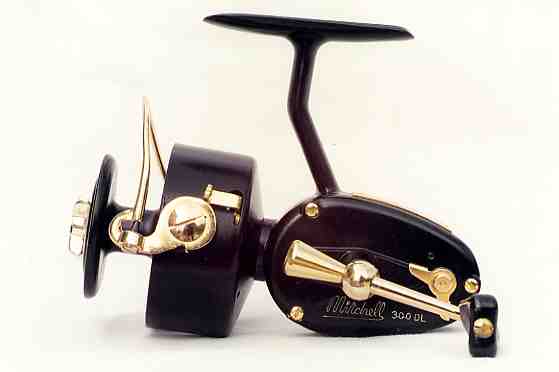
1954: Spinning reels gain popularity in the U.S.
- Inventor: Mitchell Reels (France)
- Description: Although spinning reels were first developed in the late 19th century, the design perfected by Mitchell in 1954 made them more widely accepted in the United States. They provided anglers with an easy-to-use reel that excelled in lightweight lure applications.
- Usage today: Spinning reels remain popular for finesse fishing techniques and are ideal for casting lighter baits over long distances.
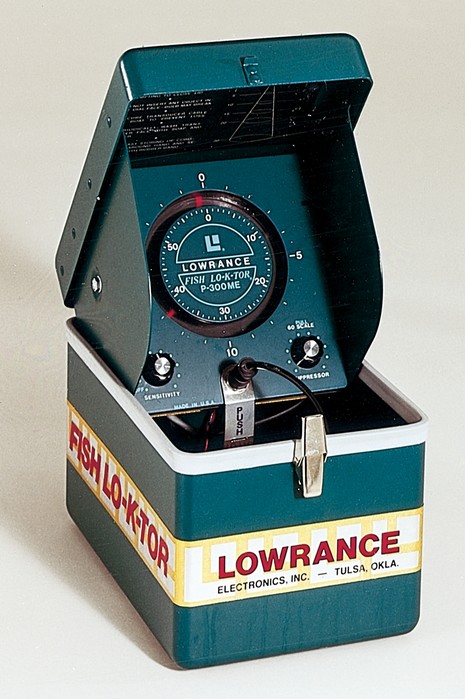
1957: Fish Lo-K-Tor (first portable sonar)
- Inventor: Darrell Lowrance (Lowrance Electronics)
- Description: The Fish Lo-K-Tor was the first portable sonar unit, which allowed anglers to locate fish and underwater structure with much greater accuracy.
- Usage today: Fish finders are now standard equipment in almost every bass boat, helping anglers make more informed decisions based on real-time data.
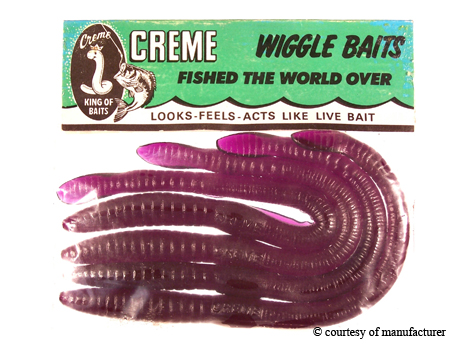
1949: Plastic worms and soft plastics
- Inventor: Nick Creme
- Description: The first soft plastic worms, introduced by Nick Creme, mimicked live bait and became one of the most effective lures for bass fishing. Nick and Cosma Creme cooked up the perfect combination of vinyl, oils and pigments to produce a molded worm that not only looked and felt soft and alive, but also stayed that way when exposed to air over time.
- Usage today: Soft plastic baits, such as worms and crawfish imitators, are used in various bass fishing techniques like the Texas rig and Carolina rig.

1971: Fluorocarbon fishing line
- Inventor: Kureha Chemical Industries (Seaguar)
- Description: Fluorocarbon line was developed in the early 1970s, offering near invisibility in water and increased abrasion resistance, which improved finesse fishing techniques.
- Usage today: Fluorocarbon is now a go-to line for clear water conditions, providing a stealthy approach when targeting bass.

1973: LORAN-C
- Inventor: U.S. Coast Guard
- Description: Before GPS, LORAN-C was a long-range navigation system that used radio signals to help boaters determine their position. It was widely adopted by anglers before the advent of modern GPS technology.
- Usage today: Although now largely replaced by GPS, LORAN-C laid the foundation for precise navigation in marine environments, helping anglers find their way back to productive fishing spots.

1974: Graphite fishing rods
- Inventor: Fenwick Rod Company
- Description: Fenwick introduced the first graphite fishing rods, which were lighter and more sensitive than their fiberglass predecessors, making them ideal for detecting subtle bites.
- Usage today: Graphite rods are the standard in modern bass fishing, allowing for greater sensitivity and better casting distance.
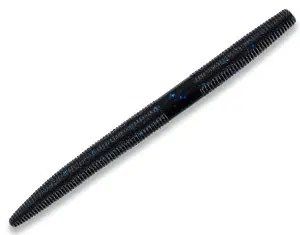
1996: Senko Worm
- Inventor: Gary Yamamoto
- Description: The Senko worm, a soft-plastic bait known for its lifelike action, became a favorite among anglers for its effectiveness in shallow water. Fishing icon Gary Yamamoto made the first Senko mold from the Bic pen he was using to draw designs on a whiteboard in 1996. The writing instrument in his hand sparked a stroke of brilliance.
- Usage today: The Senko is a widely used lure in bass fishing techniques like wacky rigging, proving effective in a range of conditions.
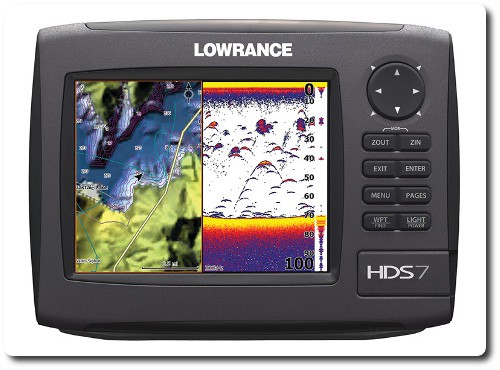
2000s: GPS integration in bass boats
- Inventor: Various (e.g., Garmin, Lowrance)
- Description: The integration of GPS systems into bass boats allowed anglers to navigate, mark fishing spots and return to productive areas with precision.
- Usage today: GPS systems are standard in competitive and recreational bass boats, enabling better route planning and location tracking.
2005: Side-scan sonar
- Company: Humminbird Electronics
- Description: While side-scan sonar had been used in military and commercial applications for decades, Humminbird was among the first to make this technology accessible to recreational anglers. This allowed anglers to scan wide areas on either side of the boat, providing a broader view of underwater structures and fish activity.
- Usage today: Side-scan sonar remains a crucial tool in both recreational and competitive bass fishing, helping anglers locate fish and structure in large bodies of water with precision.

2009: Spot-Lock (GPS anchoring)
- Inventor: Minn Kota
- Description: Spot-Lock is a GPS-powered anchoring system that allows anglers to keep their boats in a fixed position without using a physical anchor. It uses GPS to hold the boat in place even in windy or current-heavy conditions.
- Usage today: Spot-Lock is widely used in bass fishing tournaments and recreational fishing to maintain positioning in key fishing areas without needing constant boat control.

2010: HydroWave system
- Inventor: Gene Eisenmann and Kevin VanDam
- Description: The HydroWave emits natural sounds mimicking baitfish, which can stimulate fish activity, especially in less active schools. The HydroWave made its public debut during the 2011 Bassmaster Classic, where VanDam and Jeff Kriet both utilized the system on their boats.
- Usage today: The HydroWave is commonly used by professional anglers to increase their chances of success during tournaments.

2012: 360 Imaging
- Inventor: Humminbird
- Description: 360 Imaging allows anglers to see a full 360-degree view of the underwater environment around their boat. This real-time scanning sonar rotates to capture data from all directions, giving anglers a complete picture of fish locations, underwater structures and terrain. It is especially useful for locating targets in shallow waters and pinpointing fishing opportunities before making a cast.
- Usage today: 360 Imaging is widely used by both recreational and tournament anglers for its ability to offer a bird’s-eye view of the fishing area. Its comprehensive scanning helps anglers target specific structures and fish, reducing guesswork and improving efficiency.

2016: CHIRP Sonar
- Inventor: Various (Garmin, Lowrance, Humminbird)
- Description: CHIRP (Compressed High-Intensity Radiated Pulse) sonar sends a continuous range of frequencies to produce clearer, more detailed images of fish and structures. It enhances target separation and improves depth penetration in challenging conditions.
- Usage today: CHIRP sonar is now standard in many fish finders, giving anglers a clearer and more accurate view of the underwater environment.

2018: Forward-facing sonar (FFS)
- Inventors: Garmin (Panoptix LiveScope), Lowrance (ActiveTarget), Humminbird (MEGA Live Imaging)
- Description: FFS allows anglers to see live, real-time images of fish and structures in front of the boat, providing an unprecedented level of precision. Anglers can observe how fish are reacting to their lures or baits in real time, making it easier to adjust techniques on the spot.
- Usage today: While some anglers have embraced FFS for its ability to track individual fish, others argue it takes away from the skill and intuition traditionally required in bass fishing.
A legacy of innovation
From simple handmade rods to cutting-edge sonar technology, bass fishing has been shaped by over two centuries of technological advancement. Each new invention — from the first baitcasting reel to today’s forward-facing sonar — has sparked debate but ultimately led to the sport’s growth.
As anglers continue to push the boundaries of what’s possible on the water, bass fishing remains a sport where tradition and technology collide, constantly evolving to meet the challenges of modern competition, conservation efforts and the desire for more immersive and efficient angling experiences.
The future of bass fishing lies at the intersection of innovation and sustainability, ensuring the sport’s longevity for generations to come.




